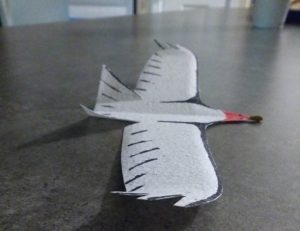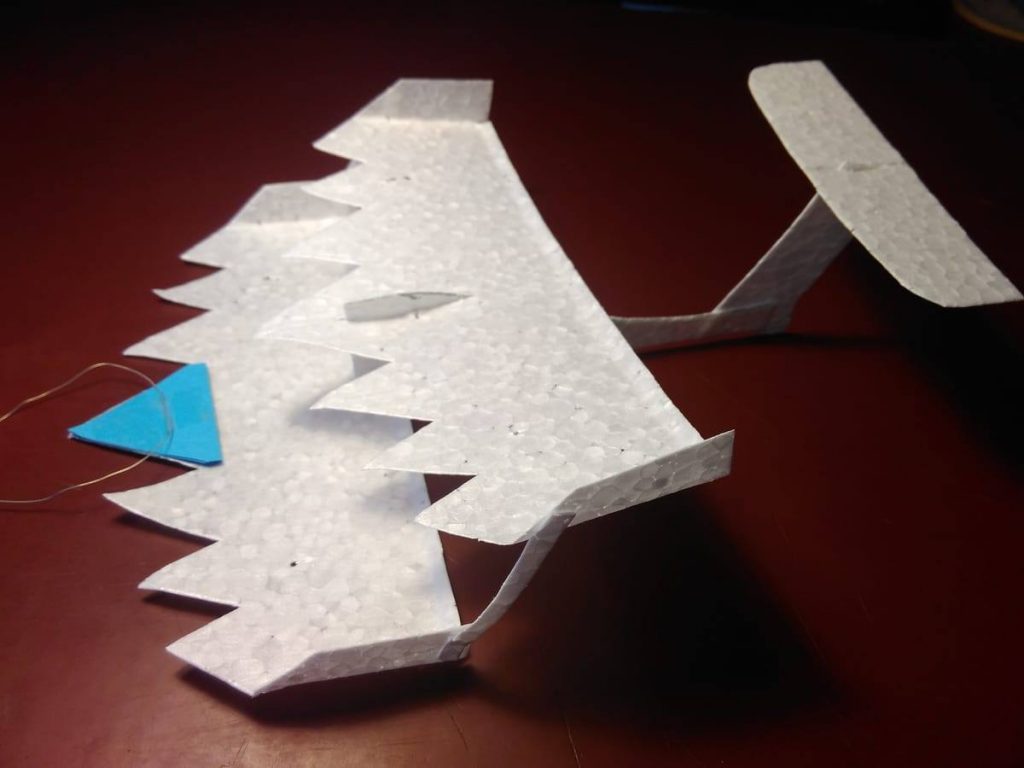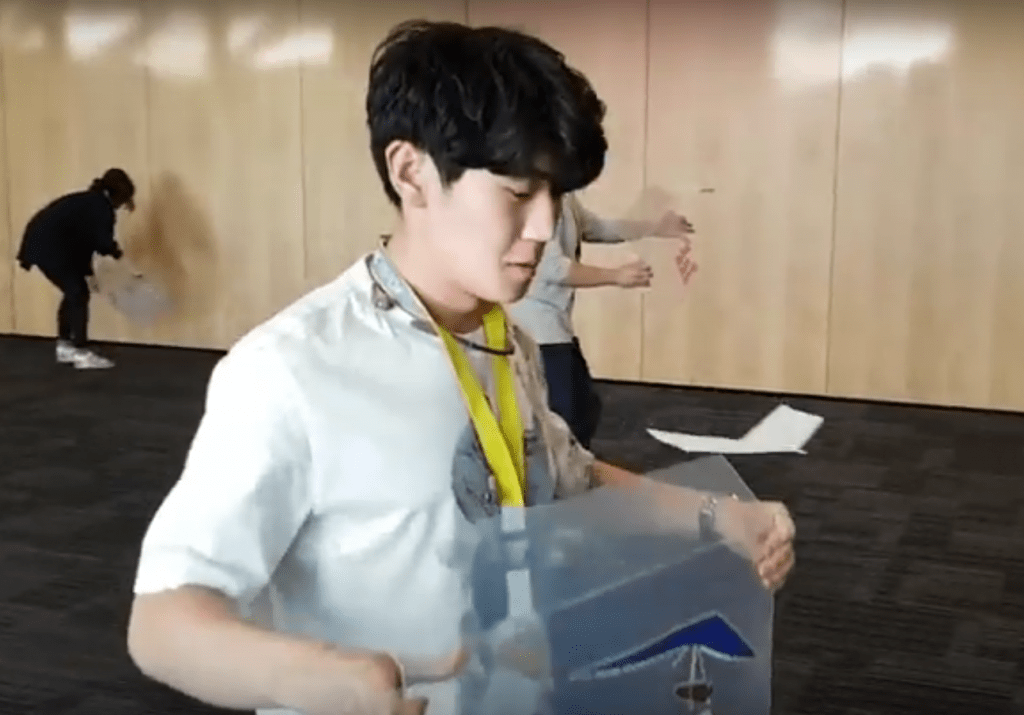I received this picture and video from František, a young man in the Czech Republic. František cut his own foam, experimented with the Baby Bug and Thompson Jagwing gliders; and he created this elegant, charming biplane from 2 Jagwings. His glider also has a tail, and his video shows very well the challenge. If the updraft of air hits the glider more in the back or the front, then the glider dives or stalls. I have asked František to experiment with holding the board at a less steep angle and see if it is any easier to fly. David Aronstein has created many walkalong glider designs with tails, and in his interview did a great job of explaining the challenges and how to mitigate them. Thomas Buchwald , Mike Thompson and Heinrich Eder have all created cool walkalong glider designs with tails.
Story
KTG 10 and His Little Brother
Ashutosh Bhakuni from India
An Update from Dr. Tim Swaits
Dr. Tim Swait just sent this video of Korean students beginning to fly walkalong gliders.
He wrote:
Slater, still getting lots of use from your walkalong gliders! Here’s a group of Korean students we gave them to. I find that it works well if you want to introduce a competitive element to run a relay race. Split the group into teams, every person has their own glider but one board per team. The board then acts like the relay baton that they pass on at the end of the room. If people want to be competitive then they can add extra weight to increase the wing loading and make the glider fly faster! It was interesting to do a comparison between a glider trimmed for min sink rate (minimum possible amount of weight as far forwards as possible, min possible washout), one trimmed for max glide (a little more weight but not so far forwards to maintain a slightly rearwards CG position still with min washout) and one trimmed for racing (much more weight and max washout), not very efficient but very stable and if you can run fast enough to keep up with it then you’ll get across the room most quickly! –Tim
More about Dr. Swait and walkalong gliders.
Fabrice Flies a Walkalong Glider with his Forehead
Here is a new video about Fabrice, a French performing artist. You can see him flying a walkalong glider with his hands and forehead. He also juggles paper airplanes!
Whimsical Remote Control Flying Balloon Object
Here is a video of Hanetama (lit. “Winged Sphere”), a RC flying balloon object with flapping wings, from Tyoukogatalabo’s (loosely translated as “Micro Flying Object Research Lab”) YouTube channel. He says he used 4 servomechanisms and controlled it with a TARANIS transmitter. He has also uploaded videos of all sorts of other fun flying things, like a cat-shaped ornithopter. (He loves cats.)
A Package from Gakujinsha
We received a package from a Japanese non-profit Gakujinsha. It was full of fun traditional Japanese toys. One of the toys is Daruma Otoshi. It demonstrates Newton’s first law of motion. Check out the video to see it in action (originally from Gakujinsha’s website http://bit.ly/2A8EGUe).
Justin in California
Justin in California said that he got the foam gliders for his 3 boys, but it’s clear that he gets as much of a kick out of flying walkalong gliders as his kids! I also like that his video shows that the gliders are slow and maneuverable enough that you can fly them in a house–not just in a school or gym.
Justin made and flew one of the paper rotating designs first before getting foam gliders. Paper is free and people who work with that kind of glider first seem to have a really easy time with foam gliders–even if they struggle with the paper ones.
Beautiful Bird Walkalong Gliders from David Aronstein
Dr. David Aronstein is famous for his balsa and tissue walkalong glider creations. But it was a surprise when he made some foam gliders. And so worth the wait; check out his beautiful bird creations!

Bruce Yeany
Bruce Yeany will retire from teaching after 40+ years, though let’s hope he keeps making hands-on science videos. This video peeks at some of his work, brings you along to a visit to his school and explores how he got started with a really interesting interview.
Also check out his YouTube channel.


